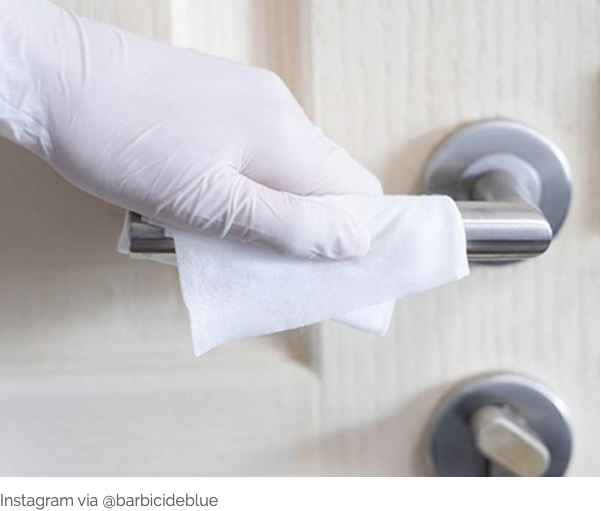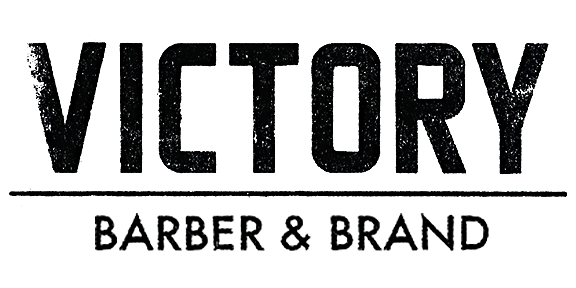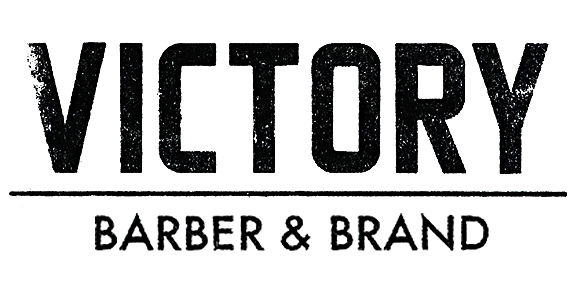
HOW TO PROPERLY DISINFECT + CLEAN YOUR SHOP BEFORE REOPENING
Barbershop and suite owners, we know you’re ready to get back to business (doing what you love most!), but there is some important preparation that need to happen first. The reality is, when we get back into the shop, the virus will still be here. That’s why it’s essential that we get prepared ASAP and act diligently to make our spaces as safe as possible BEFORE we reopen our doors—but, where to start?
BTC is working closely with Leslie Roste, BSN, RN— Barbicide® National Director of Industry Relations and Education—who specializes in infection control and chemical safety. Here’s why: To provide YOU with helpful guidelines, checklists and information!
Keep reading for everything you need to know about cleaning and disinfecting your salon prior to reopening, then download a salon checklist that will guide you every step of the way!
Where to start—here’s an overview of high-touch areas in the salon:
- Reception + Retail Area
- Work Stations
- Shampoo Bowls + Backbar
- Restroom
- Laundry
- Treatment Rooms + Pedicure Bowls
So, What Should Be Cleaned And/Or Disinfected?
The short answer—everything. Prior to reopening, it is imperative that you thoroughly clean and disinfect everything in your work space. Let’s break down some important info on disinfection vs. cleaning, what it means to properly disinfect and how to make sure you don’t miss a spot.
Cleaning vs. Disinfection
The difference between cleaning and disinfection? Disinfection kills germs and cleaning does not. Cleaning an object or surface will remove/reduce germs, dirt and impurities with soap and water. Disinfecting actually kills the germs on surfaces and objects, but this is KEY—disinfection only works on a clean object, so you must do both!
Ask Yourself: Is This A Porous vs. Non-Porous Material?
Non-Porous Materials Require Cleaning + Disinfection:
- Non-porous, hard surfaces are typically things made of glass, metal, plastic or synthetic materials.
- These surfaces require both disinfection and cleaning. Why? Disinfection only works on a clean item, so cleaning before disinfecting is always the first step.
- Methods to clean: soap and water, chemical cleaners and wipes.
Porous Materials Cannot Be Disinfected, But Can Be Cleaned:
- Porous, soft surfaces include items such as towels, capes and chairs covered in porous materials. Your hands and body are also considered porous.
- Porous materials cannot be disinfected, but can be cleaned with soap and water, chemical cleaners and wipes.
How To Properly Use Disinfectants:
- Disinfectants must be EPA-registered and labeled as bactericidal, virucidal and fungicidal.
- If you are mixing disinfectants, it’s important to mix properly.
- Using bleach? Follow these guidelines:
- Make sure that you’re using disinfecting bleach—not all bleach disinfects.
- Check the label for instructions on how to “to disinfect” to ensure that you have the proper bleach.
- Bleach must be diluted with water, but nothing else should ever be added—mixing bleach with common items like vinegar and ammonia can create a lethal gas.
Important Note: Read your product labels. 
Contact Time—Why It Matters:
What is contact time? “[It] is the amount of time that the chemical disinfectant must be in contact with the surface to inactivate or kill all pathogens on the surface,” shares Leslie. “It is also referred to as ‘wet time’ because it refers to the amount of time something must be immersed or wet.” Contact times vary widely—most commonly, between 2 to 10 minutes—so make sure to check the disinfectant’s label.
How To Properly Launder Porous Materials:
- Any linens and porous materials that may have be left in the salon (clean or dirty) prior to the closure should be washed.
- Wash on high heat with detergent and dry until materials are “hot to the touch.” There should be no moisture or dampness in any linen.
- All linens should be stored in closed, covered cabinets until used.
What Should You Do With Used Products?
- For waxes, pomades or pucks use single, use wooden spatulas (that can be tossed after use) or plastic spatulas (that can be cleaned and disinfected) to remove product without contamination).
- For hairsprays, texture sprays, mousse and aerosols, clean and disinfect thoroughly and regularly.


